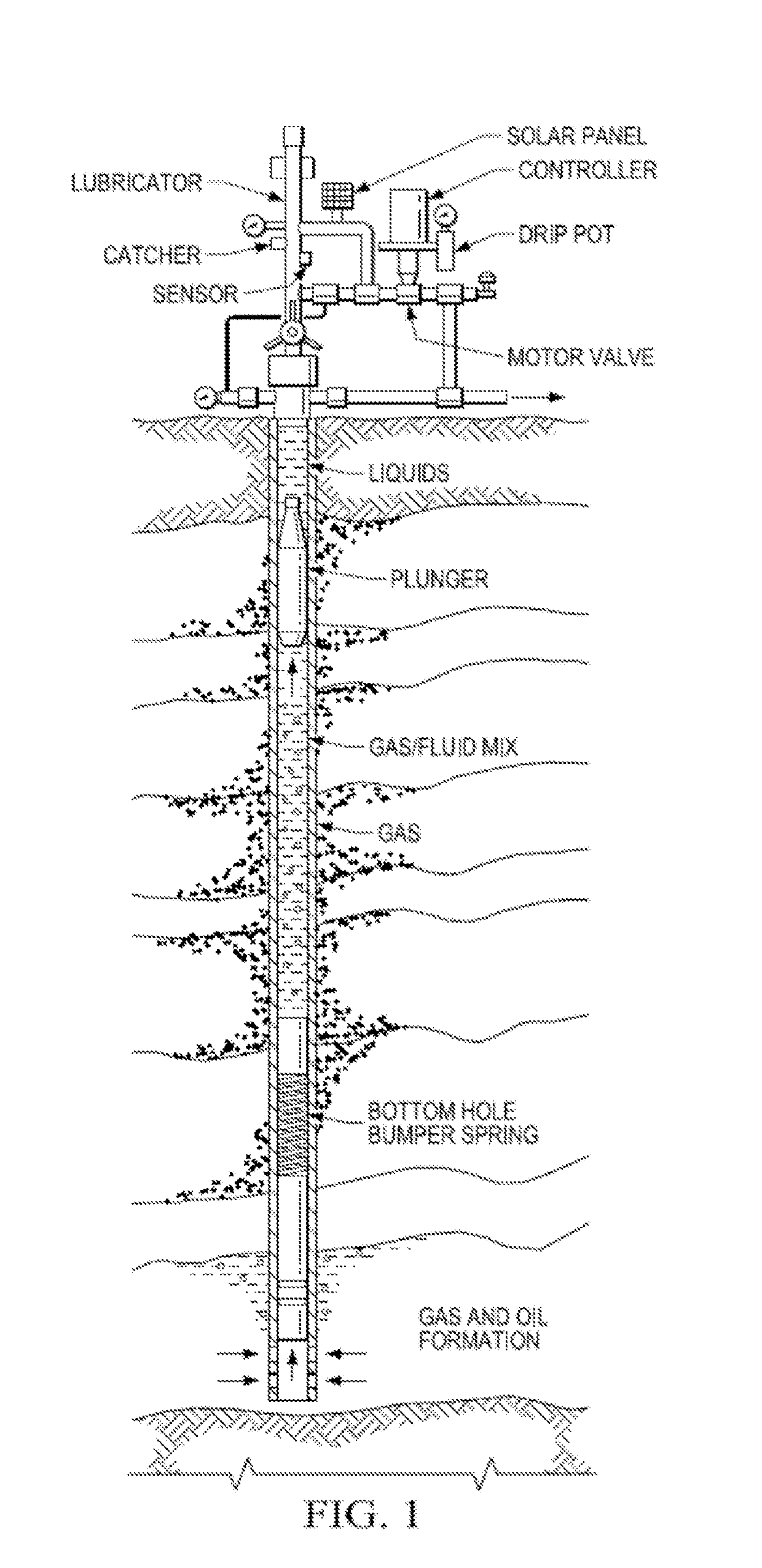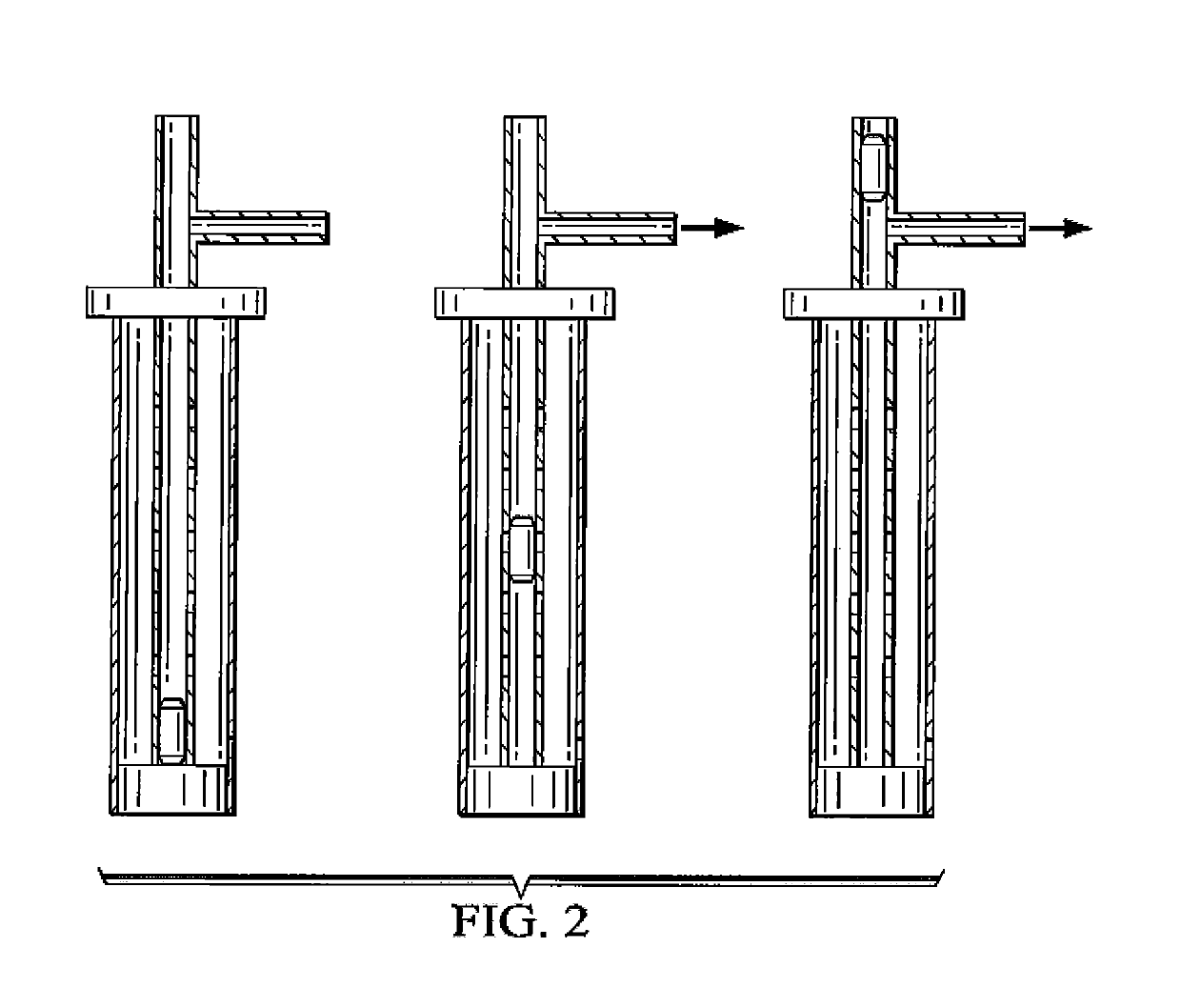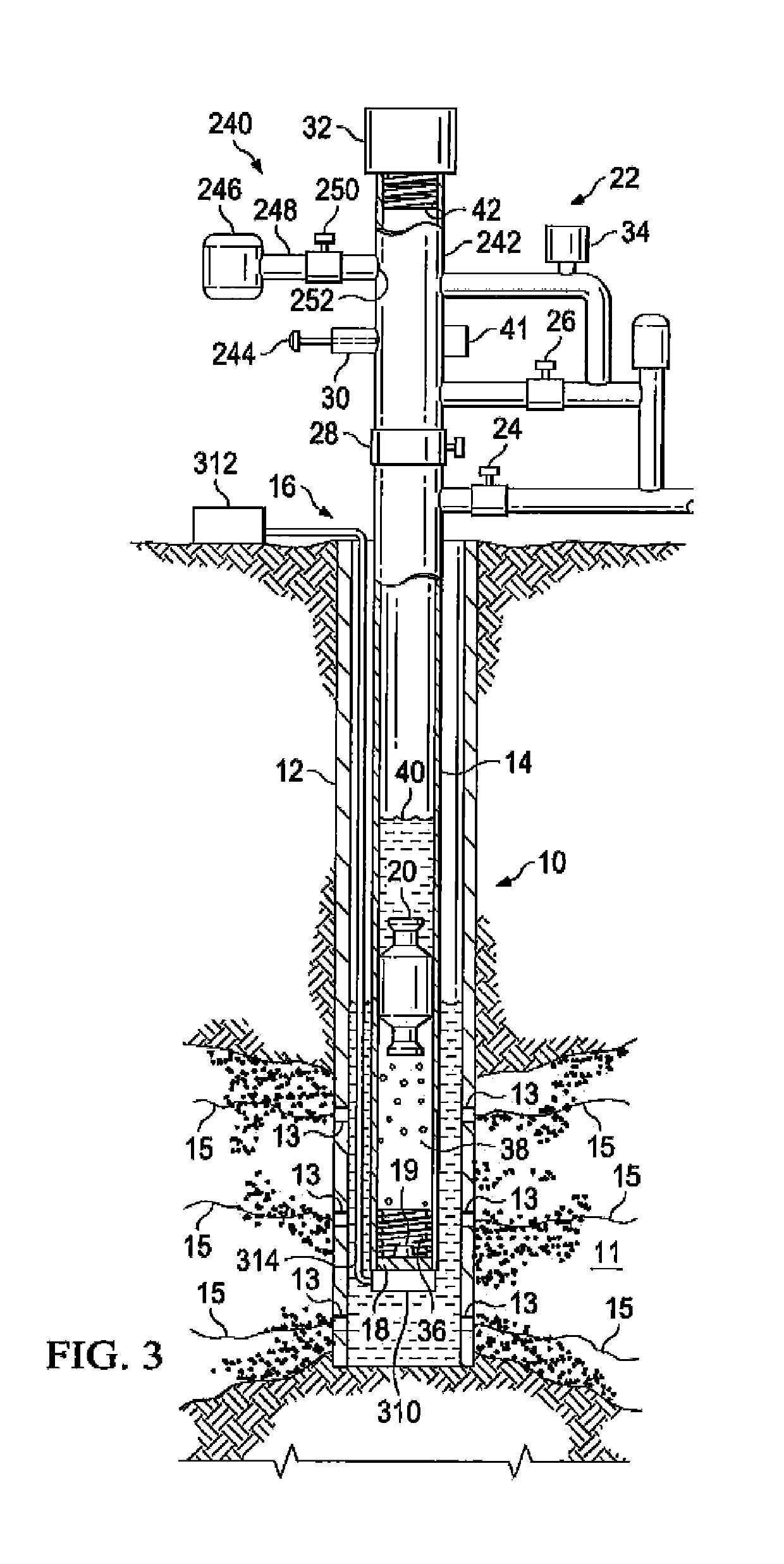Linear induction motor plunger lift
a technology of plunger lift and induction motor, which is applied in the direction of fluid removal, borehole/well accessories, sealing/packing, etc., can solve the problems of reducing the output of well, increasing the loading of well, and insufficient gas flow rate, so as to reduce the force, less energy consumption, and low maintenance cost
- Summary
- Abstract
- Description
- Claims
- Application Information
AI Technical Summary
Benefits of technology
Problems solved by technology
Method used
Image
Examples
Embodiment Construction
[0045]The disclosure provides one or more of the following embodiments in any combination thereof:[0046]An improved plunger lift system, the plunger lift system having a cased well, a plunger in the cased well moveable from a stop at the bottom of the cased well to a top of the cased well, thus delivering fluids to a wellhead, wherein plunger lift force is provided by a fluid pressure in said well, wherein the improvement comprises replacing said fluid pressure plunger lift force with a linear induction motor (LIM) plunger lift force.[0047]An improved plunger lift system wherein said LIM is a tubular linear induction motor (TLIM).[0048]An improved plunger lift system wherein said LIM also drives the plunger down said tubing at a speed faster than gravity drop speed.[0049]An improved plunger lift system, wherein the plunger lift system having a tubing positioned in a cased well, a plunger in the tubing moveable from the bottom of the tubing to a top of the tubing, wherein plunger lif...
PUM
 Login to View More
Login to View More Abstract
Description
Claims
Application Information
 Login to View More
Login to View More - R&D
- Intellectual Property
- Life Sciences
- Materials
- Tech Scout
- Unparalleled Data Quality
- Higher Quality Content
- 60% Fewer Hallucinations
Browse by: Latest US Patents, China's latest patents, Technical Efficacy Thesaurus, Application Domain, Technology Topic, Popular Technical Reports.
© 2025 PatSnap. All rights reserved.Legal|Privacy policy|Modern Slavery Act Transparency Statement|Sitemap|About US| Contact US: help@patsnap.com



